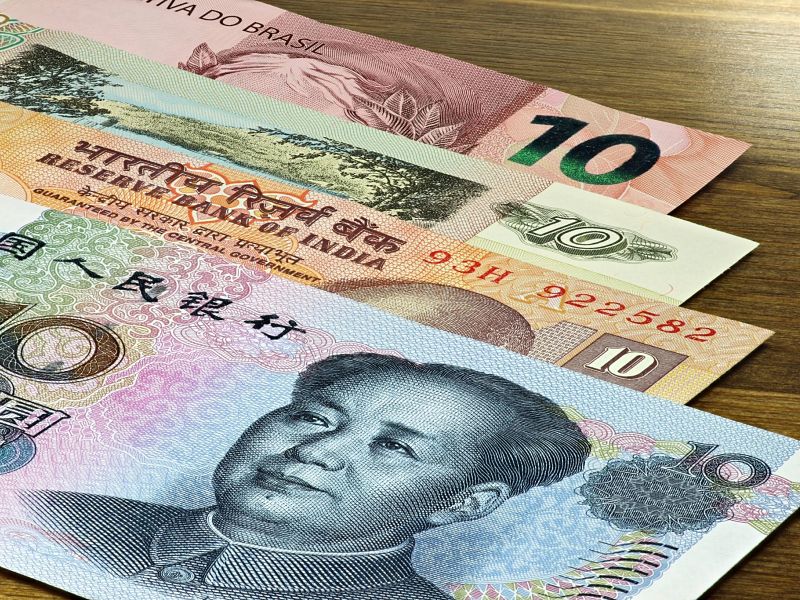
Emerging-market bonds were once considered a niche asset class, but have become an attractive choice for investors seeking higher yields to meet their income needs as a result of the relatively low yields that developed-market bonds offer.
In fact, emerging-market bonds now are “an asset class on their own, [which] offer a good pick-up over developed-market yields,” says Matthew Strauss, vice president and portfolio manager with CI Investments Inc. in Toronto. On average, emerging-market yields currently are about 4%-6% greater than developed-market yields.
Emerging-market bonds, which behave in a similar manner to equities, have a low correlation to other asset classes, says Christine Tan, associate vice president and portfolio manager with Sun Life Global Investments (Canada) Inc., in Toronto, noting that “since 2008, correlation among developed-market asset classes have increased significantly.”
Thus, emerging-market bonds represent a significant opportunity for portfolio diversification as well as reducing volatility and risk, she adds.
Tan suggests that faster economic growth in emerging markets, accompanied by higher inflation, and, consequently, higher interest rates to contain inflation, have contributed to emerging-market bonds offering much higher yields than developed-market bonds.
In fact, emerging-market economies have been growing faster than developed-market economies for several years now. This year, emerging-market economies are expected to grow by an average of 4.9% vs 2.5% for developed-market economies, based on forecasts from the International Monetary Fund (IMF) published in April. Strong growth has been accompanied by increasing demand for capital by emerging-market governments as well corporations, leading to a substantial expansion of the emerging-market bond market, which now has evolved into a fully integrated segment of the global bond market.
As a result, the size of the emerging-market bond market has grown by an average of more than 20% annually between 2004 and 2018 — faster than the growth rate of developed-market bonds — to reach more than US$19 trillion, or almost 13% of all bonds issued globally.
Currently, more than 65 emerging-market countries and almost 1,600 corporations issue bonds, providing investors with geographical, credit quality, duration and currency diversification.
But all emerging-market bonds are not the same. They can be classified into two broad categories: sovereign debt and corporate debt. These two categories can be subdivided further into two additional categories: hard currency debt and local currency debt.
Sovereign bonds are issued by emerging-market governments in either hard currencies, such as in U.S. dollars (US$) and euros, or in the local currency of the issuing country. Corporate bonds are issued by domestic and multinational companies domiciled in emerging markets in either hard or local currencies.
“[The] number of rated emerging-markets sovereign [bonds] is growing, driven largely by African and Middle East countries,” according to a report from Moody’s Investor Services Inc. Of the 101 sovereign bonds that Moody’s rates in Latin America, emerging Europe, Africa, the Middle East and Asia-Pacific, 75 had a “stable outlook” rating — implying a relatively low level of risk — as of Sept. 1.
“Emerging-market countries have come a long way during the past 20 years in terms of their macroeconomic stability and policy management,” according to Morgan Stanley Investment Management Inc.’s 2018 Emerging Markets Debt Outlook. Although there remains room for reforms, sovereign balance sheets have improved across the board, reducing systemic risks, the report adds. These structural improvements, in their macro conditions, have improved their creditworthiness, lowering the risk of default, which is a primary concern among investors.
Emerging-market sovereign bonds offer lower yields than higher-yielding emerging-market corporate bonds and have a lower default rate, making them less risky, Strauss says. And emerging-market corporate bonds could face challenges “as we come to the end of the global cycle,” thereby increasing the risk of default.
Traditionally, the greater portion of emerging-market debt has been denominated in either US$ or euros. However, this trend has changed in recent years, with the greater portion of emerging-market debt now issued in the local currency of the issuing country.
The shift to local currency bonds has resulted from improved credit ratings of emerging countries; lower debt levels; and higher levels of foreign reserves. This shift has enabled emerging-market countries to become less dependent on external currencies. Thus, bonds issued in local currencies are not as susceptible to swings in major currencies, reducing currency risk for investors.
Yet, emerging-market bonds, like their equities counterparts, can be volatile. “A small change in sentiment can trigger volatility,” notes Strauss. Adds Tan: “Emerging-market countries are less mature and consequently have inherent risks,” which can be magnified as a result of changes in market conditions
J.P. Morgan Asset Management’s Portfolio Insights report for the third quarter surmises that although broad emerging-market fundamentals at both the corporate and sovereign end remain strong, healthy growth in the U.S., which has resulted in higher U.S. interest rates and a stronger US$, have created a challenging environment for emerging-market bonds. As a result, emerging-market bonds, which were benefiting from record inflows at the beginning of the year, are currently experiencing large outflows, resulting in negative performance, led by weakening currencies.
In addition, emerging-market bonds also have been affected by downside pressures from currency weakness in countries such as Argentina, Russia, Brazil and Turkey. U.S.-initiated trade tensions have also exacerbated volatility across emerging markets.
Despite this current volatility, emerging-market bonds will continue to offer higher yields; but, as Tan says, “there’s less room to be wrong” when deciding where to invest.
This is the third in a four-part series on investing in emerging markets.